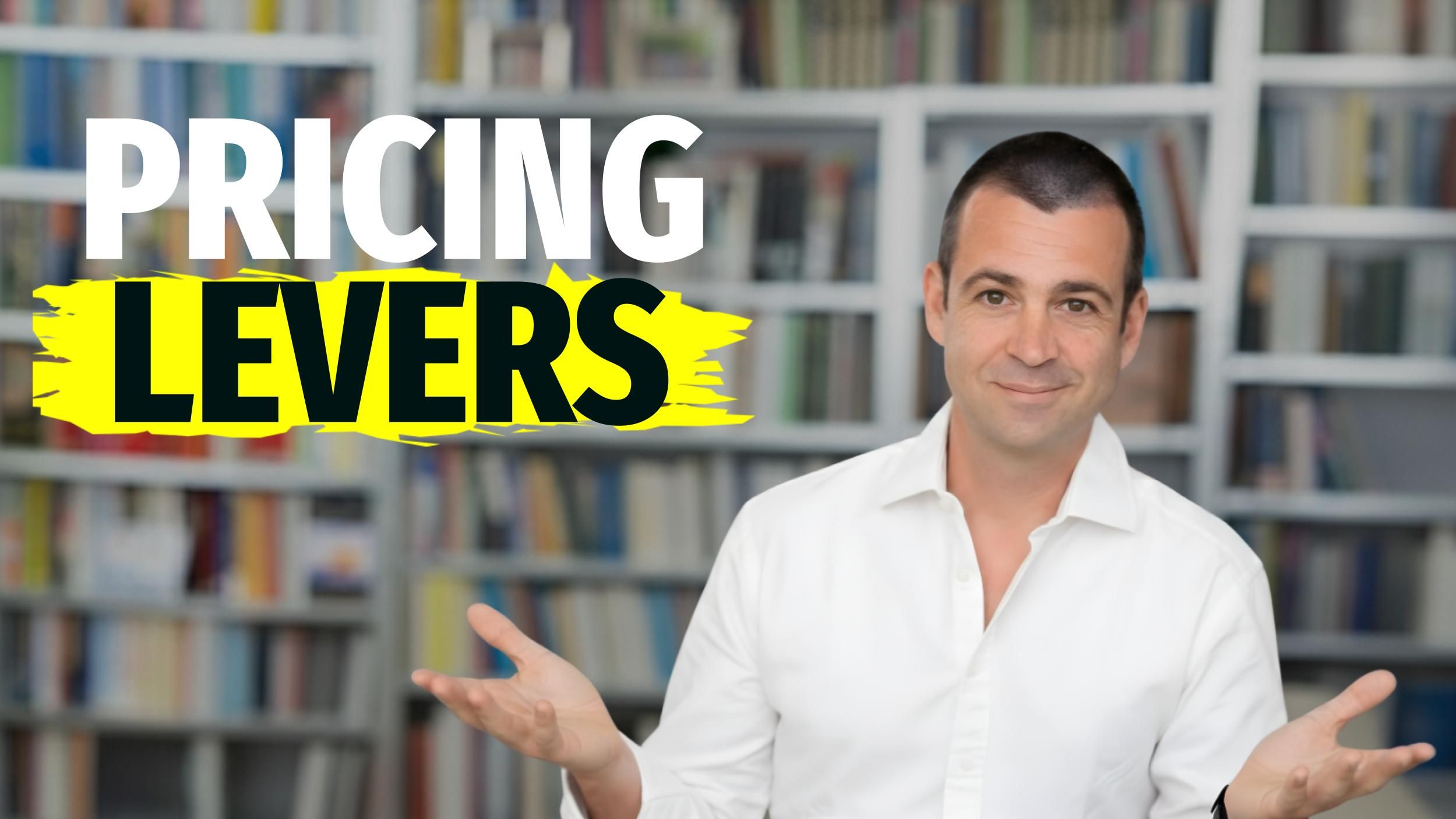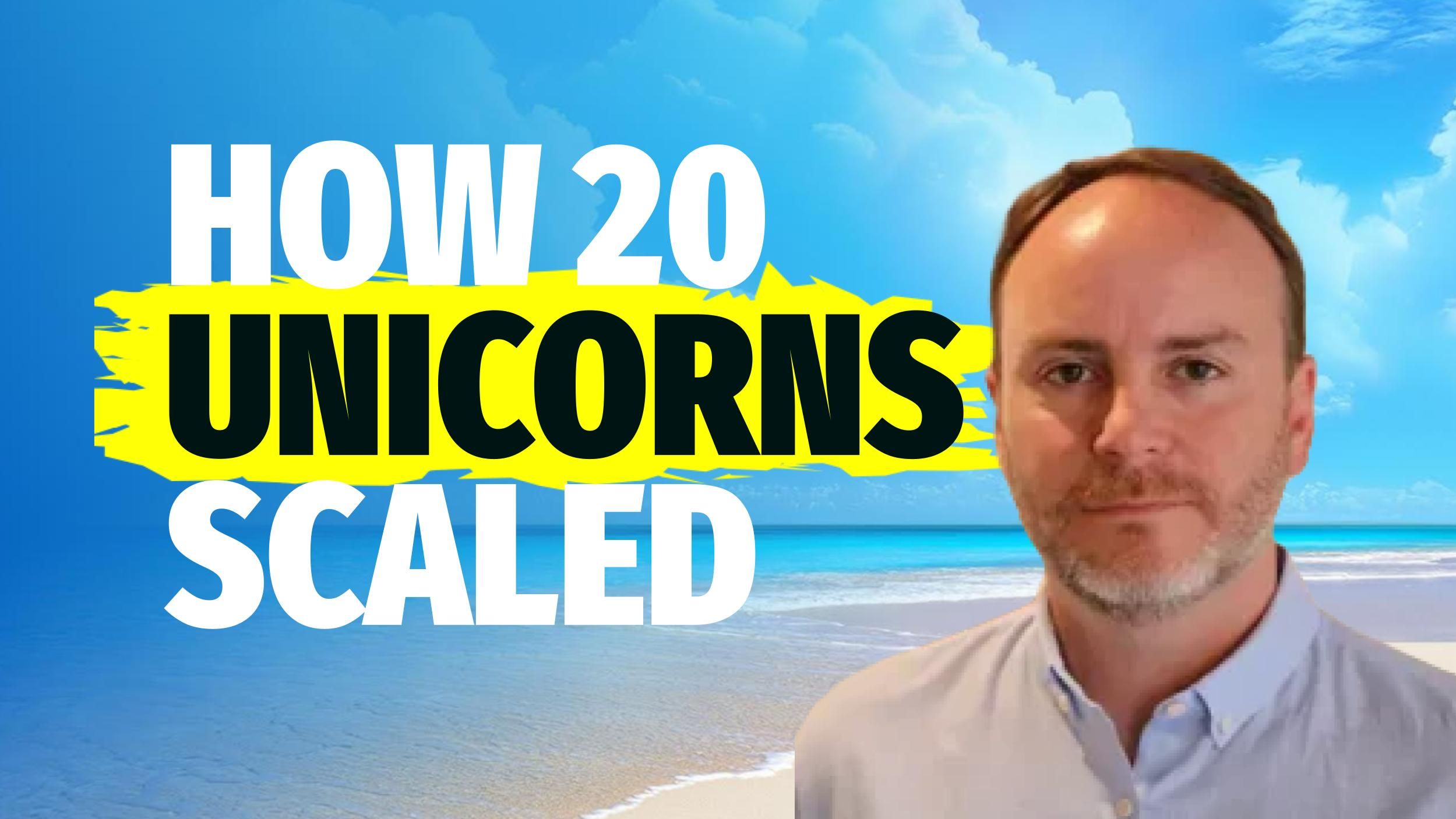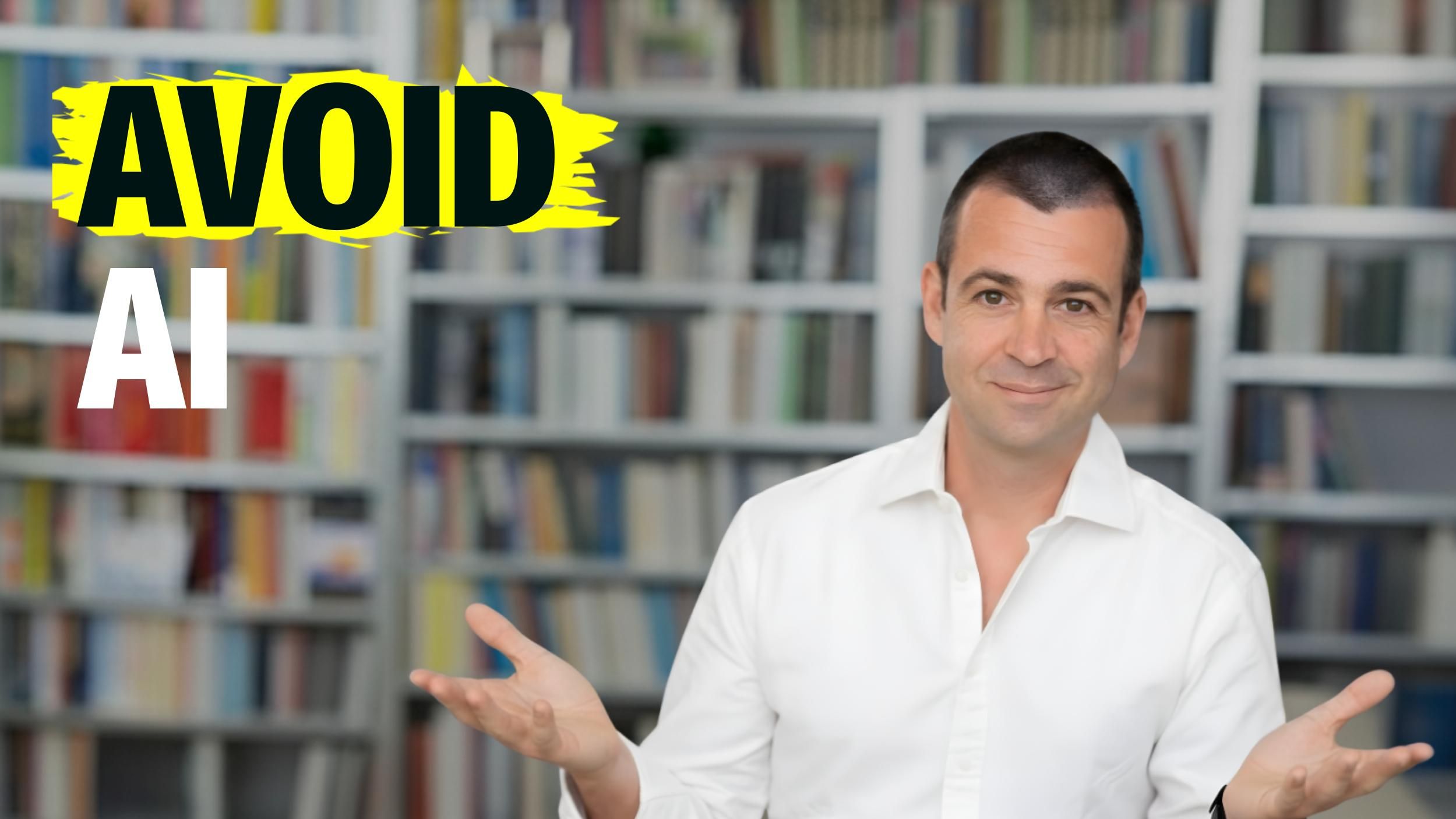
How to create competitive advantage in business this year
Minimize your amount
Hey Sprinters! Today, we talk how you can have less stress and more impact by out swimming your competition. Let's jump into it. Competition is there, but you shouldn't spend most of your time thinking about your competition. You should think about out the people you are here to serve, and these are usually not your competitors. So let's see how you can minimize the amount of time per month that you spend on competitive analysis and strategy. Let's do that half an hour per month, but if you put that in with the help of our template, you can do it. And then you will have couple benefits. Your competition will be irrelevant, and you don't have to think so much about them. And you can think about the people you are here to serve. You will know exactly where to cut expenses next month.
So the quickest budgeting opportunity possible for most people, you will have more clarity about your direct path to grow. Most businesses do too many activities and special activities that don't lead to impact and don't lead to growth. So we will see how you can cut through the activities and find your direct path to growth. And then where to strategically reinvest the budget that you have saved, what you do with those 15%, 20% money that you have cut on the left side, where you were losing and how you can deploy it on the right side, where you are already willing. That's what we do at strategist sprints. We coach entrepreneurs to double their revenue. 90 days have better operations and gain their time back by having better results with fewer activities. So today I share one of our main tools. I use it with my team every month for half an hour, our clients use it.
We call it the equalizer and I will show you how, how we use it. So it's part of the strategy sprints method, which by the way, you don't have to have a very expensive sprint coach. You can just grab the books, strategy, sprints, wherever you grab books. And it is also described there, but I want to show you how we use this in-practice in, in, in every day. So strategies, sprint method is the method that in 90 days, that was your revenue by improving the alignment of your operations, marketing sales, meaning how you onboard clients, how you make the first 10 days of wow experience and you over deliver on what you promised. And then with this smoothness of marketing, operation and sales, you have better experience for your customers, more results for them, which leads than to everything, easier for your team. And sometimes we have to check also positioning and mindset.
So positioning this what we're gonna check today. And I will show you how I limit to half an hour at the time they invest in it, but still it gives me ton of clarity, how I can out swim my competitors. What else my clients can do? Where should I cut costs next months? And where should I reinvest more of those savings? Because we are already winning there. So if we just get a little bit better by having a little bit more time and a little bit more money in that budget category, then we will crush it because we are already winning. So the first analysis that you wanna do is, is where are we winning? Where are we losing against our competitors? And it will tell you exactly. Okay, here is you. Here is your competitor in this case, we're the yellow line. And then it will tell you exactly eliminate where to eliminate costs, where to reduce costs and where to double down on this is where you invest more in.
The equalizer
And it's a simple spreadsheet and you can download it at strategysprints.com so that you really just put in half an hour. So you go to strategy, sprints.com. You will find this so-called equalizer. You download the equalizer and you're good to go. Now I will show you how use it with my team. So this is an example that one of our clients that we, we can use, cause we do this every day with dozens of entrepreneurs, the strategy sprint coaches worldwide, use this to help entrepreneurs focus on what really matters and stay on the direct path to growth. If you don't have these chances are you're spending too much on marketing too much on too many activities. You are spread too thin and then you just burn out and you don't get into scaling mode where we want you to have. So basically equalizer helps you create your own space.
If you don't have a niche, it will help you find your niche. If you have a niche, meaning you are differentiated, you are not comparable to others. By the way, I have a TEDx talk about this. If you wanna watch it, but let's assume you know what a niche is and you are differentiated, but you wanna stay differentiated because it's a continuous work of staying differentiated. How do you know if you are differentiated or not, you come to a pitch and they invite you to a pitch. Well, if you are invited to a pitch, you are already not differentiated because imagine you invite Stefan S that to a pitch. He will say, I, I don't take part in pitches, right? I have my style. If you want my style, call me. So, first of all, if you get invited to pitches, you are not differentiated yet enough.
Second. If you are directly called and say, I wanna work with you because your brand and what you stand for. That's amazing. And now, okay, we agree to it, an offer, okay, let's do it. But can you cut a little bit of time here? And can we do it with less of this and cut less of this and less? Can we reduce your day rate? Or what, if you can do it in half a day instead of a day. Now, you know that you need more differentiation because now they're discussing the wrong things. They're discussing features, et cetera, because it's not really clear what they're getting. So if you call somebody who is really differentiated, you will not talk features. You don't go to Tesla and say, yeah, but can we do it with a little bit of a combustion engine? You don't because you know what they stand for.
Traditional strategy
You don't go to apple store and say, yeah, but can I have a little bit of, of this feature? No, you know what apple stands for. It's a reduced feature on purpose. And it's designed to be that way because that's what the brand stands for. So in these cases, we have differentiation, how can we work on your differentiation? So when you, when you download the template, you will see that in the beginning, it asks you, what else can your customers do? Cause one of the mistakes of let's call it traditional strategy or common, common strategy analysis and competitive analysis that most people do. They go directly analyzing their three competitors. It's important, but it's not the first step. First step is to understand the arena from the perspective of your clients, because the three competitors are maybe from your perspective, but your client can do also other things.
They cannot just work with your competitors. They can do also a whole array of other things. For example, they can do nothing. They can hire Mike, the intern to put it. They can create a software that does it. So they have a range of possible alternatives that they can do. So explore those alternatives. First here, you will be asked to write down the alternatives and then also think about your competitors. And then we go to your data. So what are your offerings right now? And in what are you investing? For example, you are investing in the onboarding experience. You are buying t-shirts that have nice colors so that your employees, when they onboard the client they create a better experience or you are buying in this case. It's a nutritional coach. You are buying a room that has a high quality and good, our fumes and high ceilings.
So that the experience of being onboarded, physically is, is a good experience, for example, and then you score yourself to your three competitors and you say, all right, are we winning? Are our ceiling hires? Or they, your ceiling hires are our room more perfumed or they're more perfumed or better perfumed. And so in this case, they say we are losing four and our competitors are winning nine. And this is the game you will play. Now with your top 10 features here, you will list out your offerings, your feature, and then you will say, okay, we are winning. You get, you, give yourself a high number. And then we are losing. You will give yourself a low number. The template will automatically calculate for you where you, where you're winning, where you're losing. So you will know, like in the example below, you will know, for example, that you compare editor, the blue line is winning in some features on the left, for example, onboarding experience, but is losing against you here, community support.
Right time to win
So when I see this, I know immediately, ah, if this is my business, I have to cut expenses on the left side. Maybe we don't need to expensive perms. Maybe we don't need perms at all. Maybe we do it via zoom so we can cut a lot of costs on the left side, because that is not our strategic advantage. Our competitor is winning anyways. So how much would we save? Let's say 4K per month. All right. Can we put from next month? So how long is our contract? How fast can we get out of it? And how fast can we move those 4K per month into the two features where we are already winning community support and education about nutrition. So let's hire a copywriter who writes a daily newsletter about Nutri. We have 4k left. So one K goes to the copywriter per month and three K go to community support.
Maybe we find two people at thousand 500 each who do community management, half, half a day 20 hours, right, half a week. And they do community support, community engagement, maybe two different roles. One does community engagement and the other does community something else. So this is how you can budget accordingly. And as you, as you see, it's, it's quite quick in half an hour, you can directly see your current situation. Where are you? You winning right now. This is where you will put more budget, time and attention in. And where are you losing right now? So even if you improve that, you will be mediocre compared to your main competitors and you, you don't wanna be comparable at all. So you will cut there, stop doing it, save all the, that money, put that money into where you are right now, already winning.
And so if you're winning already and you are at a nine, and then you put four K per month in there, you will be now massively winning. And this is your competitive advantage. Now it's really hard to compete with you. It, it becomes E mode because you are doing this additional 4k in budget every month in there after three months, you are better. After six months, you are amazing. After 12 months, you are unbeatable in your sector with somebody that has similar resources and new people coming in will have a mode, will have a much more difficult entry. And we'll say, ah, no, no, no, they're so good. If I get in in the first week, I cannot create that experience that they are doing since 12 months. So I'm, I'm not gonna compete with them. And that defense your strategic post hope that helps. If you wanna download the equalizer tool, it's at strategysprints.com. It's free. It's the equalizer. If you have any questions, shoot us an email and keep rolling everybody.
Get our expert sales tips delivered
By submitting you agree to receive our weekly Strategy Sprints Newsletter as well as other promotional emails from Strategy Sprints. You may withdraw your consent at any time via the “Unsubscribe” link in any email or view our privacy policy at ant time.










